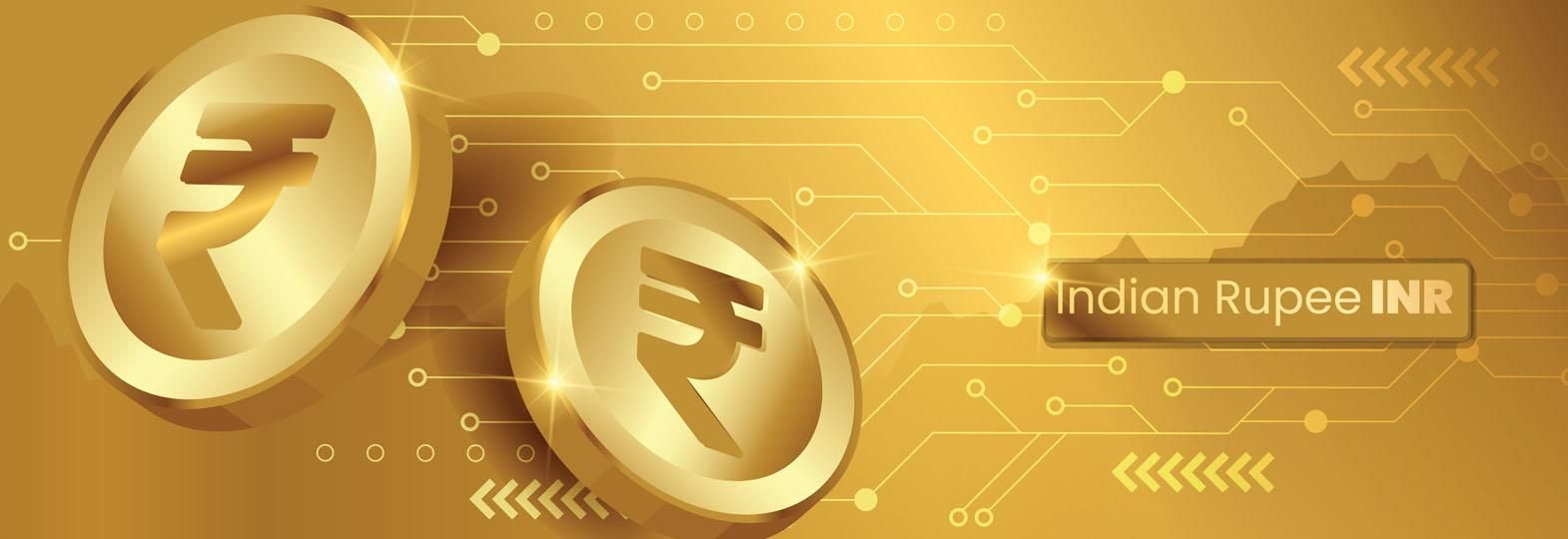The last time when the Indian government introduced something related to digital transactions was UPI, which revolutionised the way Indians make payments. Whether Indian government’s latest undertaking—central bank digital currencies (CBDCs)—will create the same effect is still to be seen.
Several countries across the globe are exploring the issuance of CBDCs, and India is no exception. The Reserve Bank of India (RBI) is currently working on a digital version of the rupee called e₹ (e-rupee) or digital rupee.
What exactly are CBDCs?
CBDCs are digital forms of traditional currency that are declared legal by the government and are issued and backed by central banks. As CBDC is issued by central banks, they have complete control and regulatory authority over it. Also, the CBDCs are an efficient way for the government to track the money, which has always been a concern with cash currency.
As the CBDCs are still a new concept for the majority of people, here are a few things one must know about the e₹:
How will e₹ work?
The e₹ will provide an additional option to the currently available forms of money. It will be substantially similar to physical banknotes, but being completely digital, it is likely to be easier, faster, and cheaper. The e₹ will also have all the transactional benefits of other forms of digital money, such as the ability to make instant payments and conduct transactions 24/7, the RBI said in its concept note on CBDCs.
How will e₹ transactions be different from UPI?
The primary difference between e₹ and UPI is that while e₹ is a digital currency that serves as a legal tender for digital transactions, UPI is merely a platform that facilitates digital transactions. In other words, e₹ is a form of digital currency that can be used as a means of payment, while UPI is a system that enables users to make digital transactions using various payment methods.
When it comes to digital transactions, UPI and internet-based banking methods like NEFT or RTGS require the involvement of a bank. However, with e₹, the transfer of funds occurs directly between digital wallets without the need for a bank intermediary. Additionally, unlike UPI, which is an overlay infrastructure that works with any form of store of value such as bank accounts, prepaid instruments, and credit cards, e₹ is a type of currency that can be used as a ‘unit of account’ and a ‘store of value’ beyond just making payments.
How will people get e₹ initially?
To use the e₹ wallet, people will have to first register for the service. The wallet will be a digital equivalent of a physical wallet and can be accessed via a smart phone. Once registered, a person can load money into the wallet via two options offered by banks—either from a bank account linked to the wallet or from various UPI apps. The process of loading money into the wallet is simple and happens instantly.
What is the difference between CBDCs and cryptocurrencies?
Cryptocurrencies like Bitcoin (BTC) and Ethereum (ETH) are independent digital currencies that operate on the principle of decentralisation and lack predetermined value or backing. Conversely, CBDCs are digital currencies that have the support of central banks. While stablecoins are a type of cryptocurrency that is pegged to the US dollar, they are backed by private entities, not central banks.
Additionally, cryptocurrencies use a permission-less open network, while CBDCs operate on a private blockchain network that requires prior permission.
Thirdly, when transacting with cryptocurrencies, users remain anonymous, but CBDCs will be linked to an individual’s bank account, which will include personal information.
Finally, since a central authority manages CBDCs, its network scalability is more manageable. While in the case of cryptocurrencies, any modifications to the network must be authorised by all nodes in the network, which can lead to issues when scaling as nodes may disagree on how to proceed.
Is it possible to invest in e₹?
The e₹ is not an investment option, but a kind of currency itself, which does not earn any interest in the e-wallet. Initially, it would not be possible to use e₹ for investment purposes.
What is the objective behind issuing e₹?
The key motivations for exploring the issuance of CBDC in India, according to the ministry of finance, include reduction in operational costs involved in physical cash management, fostering financial inclusion, bringing resilience, efficiency, and innovation in the payments system, adding efficiency to the settlement system, boosting innovation in cross-border payments space and providing public with uses that any private virtual currencies can provide, without the associated risks.
The RBI’s approach towards the introduction of the digital rupee is governed by two basic considerations—to create a digital rupee that is as close as possible to a paper currency and to manage the process of introducing digital rupee in a seamless manner. This means that the e₹ will be designed to be user-friendly and accessible to everyone, including those who may not be tech-savvy, as per RBI’s concept note on CBDCs.
What are the benefits of issuing e₹ for public?
One of the major benefits of the e₹ is that it will enable faster and cheaper transactions. This will be particularly beneficial for small businesses and individuals who often face challenges with traditional payment systems. The e₹ will also help to promote financial inclusion by providing access to digital payment services to those who are currently unbanked or underbanked.
CBDCs will provide the public with benefits of virtual currencies while ensuring consumer protection by avoiding the damaging social and economic consequences of private virtual currencies, as per RBI.
“If CBDCs are designed prudently; they can potentially offer more resilience, more safety, greater availability, and lower costs than private forms of digital money. That is clearly the case when compared to unbacked crypto assets that are inherently volatile,” according to Kristalina Georgieva, managing director of the International Monetary Fund (IMF).
What are the likely challenges?
Digital currency systems are vulnerable to hacking and security breaches, similar to other technological systems. However, it is crucial to acknowledge that these risks exist and take necessary precautions to prevent them from happening. Additionally, centralised digital currency systems, such as those used for CBDCs, may compromise users’ privacy by allowing tracking and tracing of their information, potentially impacting their personal data security.
As noted by Bureau of Indian Standards (BIS), the potential benefits will be difficult to achieve unless central banks incorporate cross-border considerations in their CBDC design from the start and coordinate internationally. Many central banks are currently investigating risks, benefits, and various designs of CBDC, mainly with a strong focus on domestic needs. Implications of CBDCs, even if only intended for domestic use, are expected to go beyond borders, making it crucial to coordinate work and find common ground among CBDCs of various jurisdictions, RBI explained in its concept note.
Also, it is uncertain whether e₹ will gain a large user base initially, given the popularity and established usage of UPI in India. By the time e₹ becomes as user-friendly as UPI, UPI is likely to have a larger user base and adoption rate. Additionally, there is uncertainty around whether people will perceive digital rupee and wallets to be easy to use and safe.
What is the difference between retail e₹ and wholesale e₹?
CBDC can be classified into two broad types, viz. general purpose or retail (CBDC-R) and wholesale (CBDC-W).
Retail CBDC (e₹-R) would be potentially available for use by all, viz., private sector, nonfinancial consumers and businesses, while wholesale CBDC (e₹-W) is designed for restricted access to select financial institutions. While wholesale CBDC is intended for the settlement of interbank transfers and related wholesale transactions, retail CBDC is an electronic version of cash primarily meant for retail transactions.
In India, the RBI had launched pilots in digital rupee in the wholesale segment on November 1, 2022, and in the retail segment on December 1, 2022.
Which banks are associated with pilot launch of e₹?
The pilot programme for e₹ involves the participation of eight banks, including State Bank of India, ICICI Bank, Yes Bank, IDFC First Bank, Bank of Baroda, Union Bank of India, HDFC Bank, and Kotak Mahindra Bank.
What will happen to cryptocurrency market post CBDC issuance by numerous countries?
It is currently unclear how successful CBDCs will be and how far they will advance. However, central banks are taking steps to prepare for potential developments and to utilise new technologies.
If designed appropriately, CBDCs could offer increased resilience, safety, availability, and decreased costs compared to private forms of digital currency. This is particularly true when compared to unstable unbacked crypto assets. Even well-regulated stablecoins may not be a strong match against a stable and well-designed CBDC.
What is the current status of CBDC launch globally?
On March 13, 2023, the Indian government informed the Parliament that the digital rupee amounting to over ₹130 crore is currently in circulation in the country.
Globally, over the past few years, there has been a significant increase in the number of countries exploring CBDCs. As of now, 114 countries, which represent over 95 per cent of the global GDP, are looking into CBDCs. This is a significant increase from May 2020, when only 35 countries were considering CBDCs. Furthermore, 60 countries are now in an advanced phase of exploration, such as development, pilot, or launch. In addition, 11 countries have already fully launched their digital currency, and China’s pilot programme, which is reaching around 260 million people, is expected to expand to most of the country in 2023. Jamaica is the latest country to have launched its CBDC, according to the American think tank Atlantic Council.










Comments